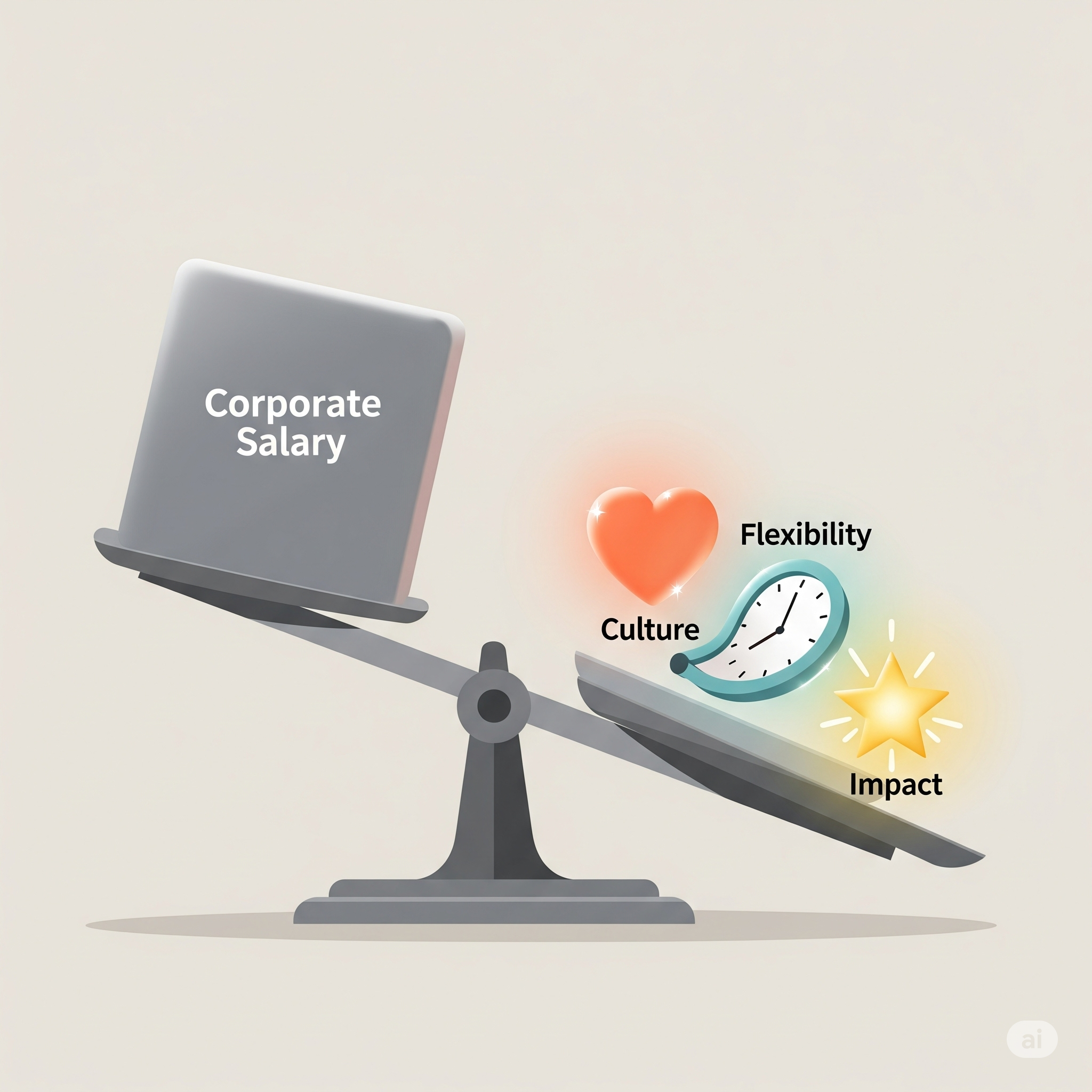You did it. You landed that client. The contract is signed, the deposit is in, and a wave of exhilaration washes over you. This is the moment every entrepreneur, especially those building a thriving small business from the ground up, lives for. It’s a validation of your hard work, your vision, your late nights, and early mornings. You’ve successfully navigated the treacherous waters of lead generation, pitching, and negotiation. You’ve convinced someone that your unique expertise, your incredible service, or your groundbreaking product is exactly what they need. Congratulations, you’ve won the first battle.
But let me tell you something, my friend, that first win, while incredibly satisfying, is just the beginning. The true test, the real strategic play that determines the longevity of your small business, the vibrancy of your reputation, and the ultimate health of your bottom line, begins the moment that contract is signed. It begins with what happens *after* the sale, when the initial excitement has the potential to either blossom into a deep, enduring partnership or fizzle out into a lukewarm, forgettable transaction. This critical, often underestimated phase is what we savvy business minds call client onboarding. And if you’re thinking it’s just about sending an email and a welcome brochure, then buckle up, because we’re about to redefine what it means to truly wow and retain your first, and every subsequent, customer. This isn’t just about making them feel good; it’s about strategic excellence, about building a foundation of trust and efficiency that propels your small business forward, turning clients into advocates, and advocates into your most powerful marketing channel.
Why, you might ask, should a small business, often stretched thin with resources and time, invest so heavily in something that seems, on the surface, like mere administrative overhead? Ah, but that’s precisely where the misconception lies. Client onboarding, when executed with precision and a touch of genuine care, is not overhead; it is a profit center. Think about it. The cost of acquiring a new customer is, as you likely know, significantly higher than the cost of retaining an existing one. And what better way to ensure retention than to make the initial experience so seamless, so impressive, so undeniably valuable, that your client can’t imagine doing business with anyone else? A phenomenal onboarding process minimizes buyer’s remorse, solidifies the perceived value of your offering, and immediately positions your small business as professional, organized, and truly client-centric. It sets the stage for a relationship built on trust and mutual respect, reducing the likelihood of misunderstandings, scope creep, and the dreaded client churn that can cripple a growing small business. It educates your clients, empowers them to get the most out of what you offer, and turns them into champions who will sing your praises to their networks, becoming an organic, potent force for referral generation. In essence, it’s not just about managing expectations; it’s about exceeding them, creating a memorable experience that transcends the transactional and fosters true loyalty.
So, how do we craft this magical, client-wowing, retention-driving onboarding experience? It’s not a single step, but a symphony of carefully orchestrated actions, each playing a vital role. Let’s break it down into the foundational pillars, each crucial for your small business to master.
Our journey begins with **Pillar One: The Art of Preparation – Laying the Invisible Foundation**. This phase happens *before* the client even knows they’re being onboarded, and it’s where internal alignment and data mastery shine. Too many small businesses stumble here, scrambling to get their ducks in a row *after* the client is already expecting things to move. Don’t be that business. Your internal team, no matter how small, needs to be on the same page. Who is the primary point of contact? Who handles billing? Who leads the project? What are the internal communication channels for this new client? Establishing these roles and responsibilities internally beforehand ensures a smooth handoff and prevents the client from feeling like they’re navigating a bureaucratic maze. This is also the moment to truly leverage your CRM system, even if it’s a simple spreadsheet for a budding small business. All client data, every piece of information gathered during the sales process, needs to be meticulously recorded and accessible. This isn’t just contact details; it’s their goals, their pain points, their preferences, their specific needs as discussed. This proactive data collection allows for immediate personalization later on. And speaking of personalization, this pre-onboarding phase is also where you might start crafting the core elements of your welcome packet. I’m not talking about just throwing a bunch of documents together. Imagine a thoughtfully curated digital or even physical package that anticipates their immediate questions and makes them feel truly welcomed. This could include a clear “what happens next” roadmap, FAQs, bios of key team members they’ll be interacting with, or even a personalized welcome video that you’ve pre-recorded and just need to tailor. The more you prepare in advance, the more effortless and impressive the actual onboarding feels to the client. For a small business, this pre-planning allows you to scale efficiently and consistently deliver a high-quality experience without constantly reinventing the wheel for every new client.
Next, we move to **Pillar Two: The Grand Welcome – Making the First Impression Unforgettable**. This is the moment your client officially steps across the threshold, and it’s your chance to deliver that initial “wow” factor. Forget the dry, transactional welcome email. Think about how you can genuinely surprise and delight them. For a small business, the beauty is in the personal touch. Can you send a small, thoughtful welcome gift? Perhaps a curated selection of coffee, a relevant book, or even a branded item that genuinely adds value? A handwritten note, acknowledging their trust in your business and expressing genuine excitement to work with them, can go miles further than any mass-produced email. The formal kick-off call is paramount here. This isn’t just a formality; it’s the cornerstone of setting the right tone. Have a clear agenda. Introduce everyone who will be involved from your side, explaining their roles. Reiterate the project scope, key deliverables, and initial timelines. This is also the time to clarify expectations around communication – how often will you communicate, through what channels, and what’s the expected response time? For complex projects, this is also the moment to introduce any project management tools you’ll be using, walking them through the basics so they feel empowered, not overwhelmed. Revisit the discovery phase – ask clarifying questions, confirm their understanding of the process, and listen, really listen, to any lingering concerns or new insights they might have. This initial conversation is about making them feel heard, understood, and confident that they’ve made the right decision. For a small business, having the founder or a key decision-maker present on this call can be incredibly powerful, demonstrating a level of commitment and accessibility that larger organizations simply can’t offer. This personal investment at the outset fosters a deeper connection and trust.
Following the initial welcome, we engage in **Pillar Three: Education and Empowerment – Guiding Them to Success**. A client who feels lost or confused will quickly become frustrated, regardless of how good your product or service is. Your onboarding process must actively educate and empower your clients, transforming them from passive recipients into active participants in their own success. This means providing clear, accessible resources. Think beyond a single welcome email. Create a dedicated client portal if possible, or at least a shared folder containing all necessary documents, FAQs, how-to guides, and even short, digestible video tutorials for complex processes. Anticipate their questions before they even ask them. If you offer a service, explain the exact workflow, what you need from them at each stage, and what they can expect from you. If it’s a product, provide comprehensive training materials, not just a manual. Schedule regular, proactive check-ins that aren’t just about project updates, but about how they’re feeling, if they have any questions, or if there’s anything you can do to make their experience smoother. These check-ins are crucial touchpoints for identifying potential issues before they escalate. For a small business, this human touch, this genuine concern for their learning curve and comfort, is a massive differentiator. You’re not just providing a service; you’re becoming a trusted advisor, a partner in their journey. This builds confidence and significantly reduces the number of support tickets or frantic calls later on, freeing up your valuable small business time for strategic growth.
Our fourth pillar is **Pillar Four: Setting Crystal Clear Expectations and Milestones – The Roadmap to Relief**. Misaligned expectations are the silent killers of client relationships. This pillar is about transparency, clarity, and building predictable progress. Present a clear roadmap. Show them what happens next, what the major milestones are, and what the anticipated timelines are for each. This can be a simple visual timeline or a detailed project plan, depending on the complexity of your offering. Critically, define success metrics together. What does success look like for *them*? How will you collectively measure it? This ensures you’re both striving towards the same goal. Establish a clear communication cadence: Will you have weekly calls? Monthly reports? How will updates be shared? This predictability reduces anxiety and builds confidence. And just as important, establish escalation paths. If there’s an issue, who do they contact? What’s the process for resolving disagreements? Having these frameworks in place *before* problems arise provides a sense of security. For a small business, where every client relationship is paramount, being upfront and consistent with expectations is non-negotiable. It protects your time, your reputation, and most importantly, the client’s peace of mind. It’s about under-promising and over-delivering, always, and clear communication is the bedrock of that strategy.
Finally, we arrive at **Pillar Five: Feedback and Iteration – The Engine of Continuous Improvement**. Onboarding isn’t a one-and-done process. It’s a living, breathing entity that should constantly evolve. This pillar emphasizes the critical role of feedback and the commitment to continuous improvement. Implement formal feedback loops: send out short, targeted surveys after key milestones or at the end of the initial onboarding phase. Ask specific questions about their experience: What went well? What could be improved? Was anything confusing? But don’t stop at formal surveys. Actively solicit informal feedback during your check-ins. Listen carefully for subtle cues of confusion or frustration. Document common questions or issues that arise during onboarding. These recurring themes are goldmines for process improvement. If multiple clients are asking the same question, it means your current explanation or resource isn’t clear enough. If there’s a consistent bottleneck, you need to re-evaluate that step. Every piece of feedback, positive or negative, is an opportunity to refine your process, making it smoother, more efficient, and more delightful for the next client. For a small business, this agile approach to feedback is a massive advantage. You don’t have layers of bureaucracy to navigate. You can implement changes quickly, test them, and rapidly iterate, ensuring your onboarding process remains a cutting-edge asset, continually optimized for client satisfaction and retention. This commitment to improvement showcases your dedication and professionalism, further cementing client trust.
Now, let’s talk practicalities. What tools and technologies can help a small business streamline and elevate their onboarding process? You don’t need a massive budget or a team of IT experts. Smart choices can make a world of difference. At the heart of it all should be a robust CRM system. Whether it’s a free tier of HubSpot, Zoho CRM, or a more specialized solution like Pipedrive, a CRM allows you to centralize client data, track interactions, automate follow-ups, and manage your pipeline efficiently. It’s the single source of truth for your client relationships. Next, consider project management tools. Asana, Trello, ClickUp, or Monday.com can help you manage project timelines, tasks, and team collaboration, keeping everyone accountable and giving your client transparency (if you choose to grant them access to certain boards). For communication, beyond email, tools like Slack can facilitate quicker internal discussions, and dedicated client portals (sometimes built into CRMs or PM tools) offer a centralized hub for documents, updates, and communication, making the client feel part of a professional ecosystem. E-signature software like DocuSign or HelloSign can speed up contract signing and document approvals, eliminating cumbersome printing and scanning. To gather feedback effectively, survey tools like Typeform or SurveyMonkey are invaluable, offering customizable questionnaires to gauge client satisfaction. And for automating repetitive tasks, platforms like Zapier or Make.com (formerly Integromat) can connect different applications, triggering actions like sending welcome emails or creating new project tasks automatically once a contract is signed. Finally, for that extra “wow,” consider services that handle welcome kit fulfillment, shipping branded merchandise or thoughtful gifts directly to your clients. The key for a small business is to start simple, choose one or two tools that address your most pressing needs, and gradually expand as your process matures and your business grows. Don’t over-invest in complex systems you won’t fully utilize; focus on efficiency and genuine value.
Even with the best intentions and the most meticulously planned process, pitfalls can emerge. Being aware of them allows you to proactively mitigate risks. One common pitfall is **overwhelming the client with too much information** all at once. Resist the urge to dump everything on them in the first week. Break down information into digestible chunks, deliver it incrementally, and allow them time to process. Another trap is **a lack of personalization**. While templates are efficient, they shouldn’t come at the cost of making the client feel like just another number. Personalize your communications, reference details from your sales conversations, and ensure they feel uniquely valued. **Inconsistent experience** across clients or within your own team can erode trust. Ensure everyone involved in onboarding follows the same process, maintains the same tone, and upholds the same standards. **Poor internal communication** is a silent killer; if your sales team isn’t properly briefing the delivery team, or if the billing department is out of sync, the client will feel the friction. Establish clear internal handoff protocols. **Setting unrealistic expectations** about timelines, deliverables, or outcomes will inevitably lead to disappointment. Be honest and transparent, even if it means delivering news they might not want to hear. The trust you build by being realistic will far outweigh any momentary discomfort. Perhaps the most critical pitfall, especially for small businesses eager to scale, is **neglecting the human touch**. Automation is wonderful for efficiency, but it should never replace genuine human connection. Pick up the phone, have those check-in calls, express empathy, and celebrate their wins with them. Finally, **failing to follow up** after the initial onboarding period is a missed opportunity. Your onboarding should gracefully transition into ongoing client management, ensuring they feel supported throughout their entire journey with your small business.
So, how do you know if your onboarding process is actually working? How do you measure its success and understand its return on investment for your small business? The metrics are clear. First, track your **client retention rates**. Are clients staying with you longer? Are they renewing contracts? A high retention rate is a direct indicator of effective onboarding. Second, monitor your **referral rates**. Are your clients so delighted that they’re actively recommending your small business to others? Word-of-mouth is the holy grail of marketing, and stellar onboarding is its primary engine. Third, delve into **Customer Lifetime Value (CLV)**. Are your well-onboarded clients spending more over time, perhaps through upsells or cross-sells? This indicates deeper trust and satisfaction. Fourth, actively measure **client satisfaction scores** using metrics like the Net Promoter Score (NPS) or Customer Satisfaction (CSAT) scores. These provide quantifiable data on how your clients feel about their experience. Fifth, pay attention to **reduced support tickets or issues**. A well-educated and empowered client will encounter fewer problems, saving your small business valuable time and resources that would otherwise be spent on reactive troubleshooting. Lastly, consider the **speed of project kick-offs**. Is your onboarding process getting clients to the “doing business” phase faster and more efficiently? These tangible results directly impact your small business’s profitability and long-term viability. Even with limited resources, a small business can track these metrics using simple spreadsheets or built-in analytics within CRM or survey tools. The point isn’t to drown in data, but to identify trends and make informed decisions that continually improve your client experience.
Let’s be profoundly clear about one thing: while large corporations have seemingly endless resources to throw at sophisticated onboarding platforms and dedicated teams, the small business actually possesses an inherent, powerful advantage when it comes to client onboarding. It’s an advantage that no amount of budget can buy. This advantage lies in your **agility**. You can adapt your processes quickly based on feedback, something larger organizations struggle with. It lies in the **personal touch** you can provide. Your clients often have direct access to the founder or key decision-makers, fostering a level of trust and intimate understanding that’s impossible in a behemoth company. It lies in the ability to build **deep relationships**, turning clients not just into customers, but into true advocates, partners, and even friends. For a small business, phenomenal onboarding isn’t just good practice; it’s the bedrock of sustainable growth. Word-of-mouth marketing, powered by truly wowed clients, is the most authentic, potent, and cost-effective marketing strategy you could ever hope for. Your small business thrives on reputation, on the strength of your relationships, and on the glowing testimonials of happy clients. By investing in an onboarding process that consistently delights, educates, and empowers, you’re not just retaining first customers; you’re building an unshakeable foundation for enduring success, scaling your impact one genuinely positive client experience at a time.
So, my fellow entrepreneur, as you celebrate that next new client, remember that the true victory lies not just in winning them, but in keeping them, delighting them, and turning them into raving fans. Go beyond the brochure. Design an onboarding experience that doesn’t just convey information, but transfers confidence, builds rapport, and cultivates loyalty from day one. Invest in this critical phase, iterate constantly, and embrace the power of a truly human-centric approach. Your small business isn’t just selling a product or service; it’s selling an experience, a partnership, a solution delivered with care and professionalism. Make that experience so exceptional, so seamless, so utterly delightful, that your first customers become your best customers, your loudest cheerleaders, and the very engine of your thriving enterprise. This isn’t just about process; it’s about passion. It’s about building not just a business, but a legacy of trust and excellence. Go forth, and wow them. Your small business, and your future clients, will thank you for it.



